Fun Water Games Kids Will Keep Playing: Backyard & Field Day
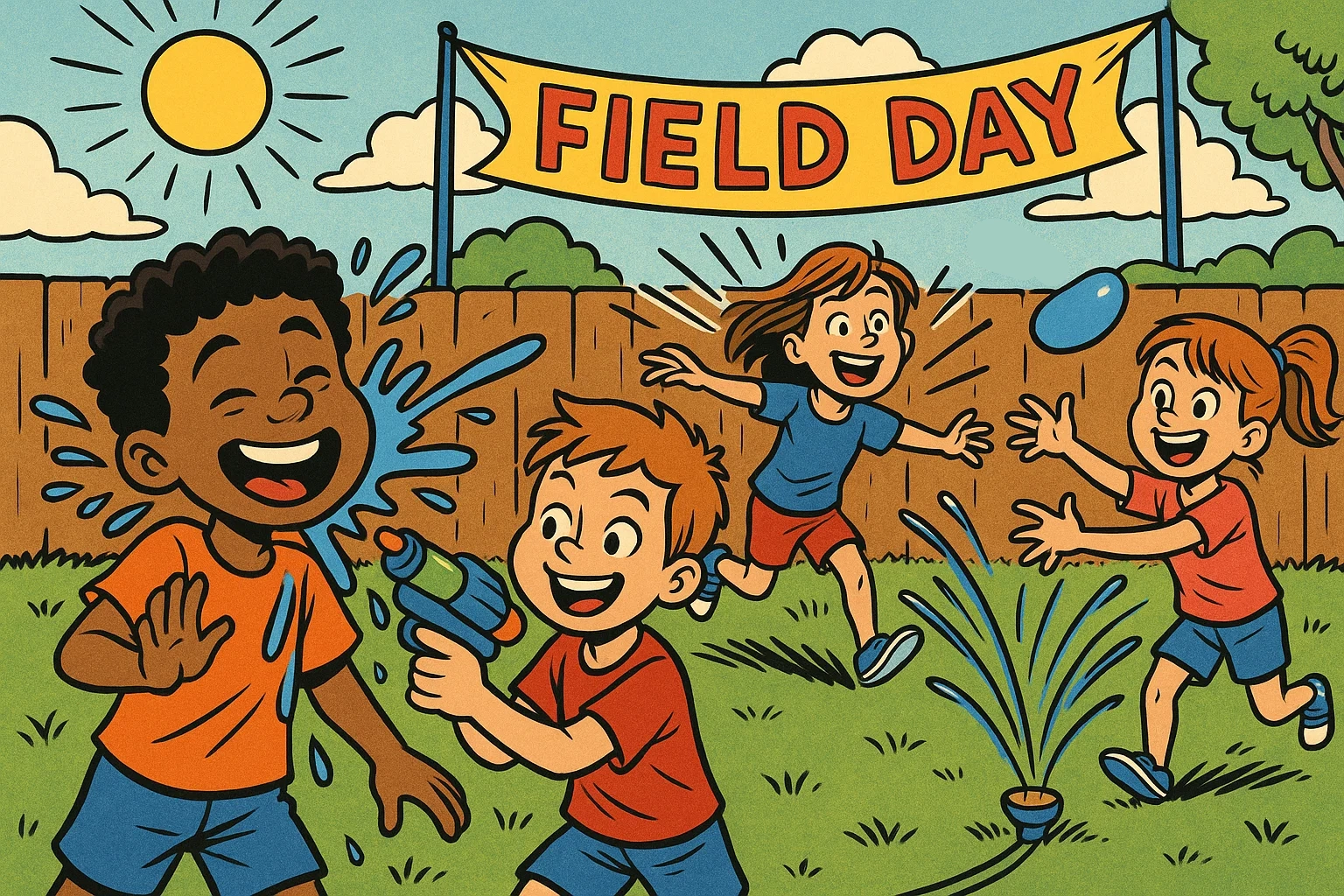
When temperatures rise and kids need outdoor entertainment, liquid activities provide the perfect solution. Water games combine exercise, cooling relief, and imaginative play in ways that keep kids engaged for hours.
This comprehensive guide offers practical aquatic game ideas you can set up in your backyard or incorporate into field day events. From simple spray bottle activities for toddlers to competitive relay races for older children, these games require minimal preparation while delivering maximum fun.
Water Balloon Fun: The Ultimate Summer Water Games
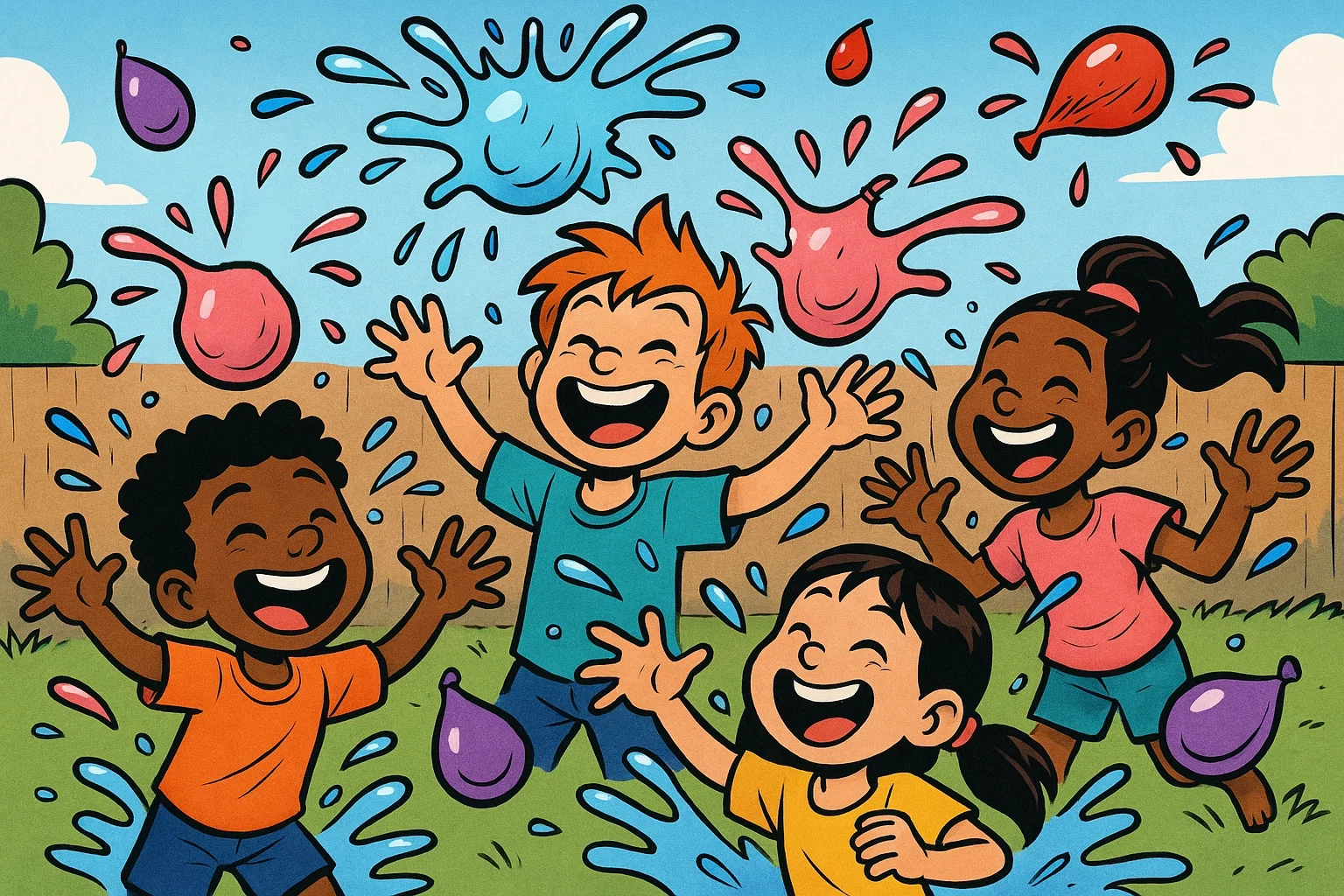
Balloons remain a classic choice for summer games, offering versatility and excitement. A study published in the Journal of Physical Activity and Health found that children engaged in active outdoor play for an average of 27% longer when fluid elements were incorporated into activities.
Water Balloon Piñatas: Setup and Rules
Transform traditional piñatas into refreshing summer entertainment. String up balloons filled with water along a clothesline or tree branch, spacing them about 12 inches apart. Provide children with a blindfold and a plastic bat or pool noodle.
How to play: One child gets blindfolded while others guide them toward the hanging balloons. The player takes three swings to break a balloon. When successful, they get wet along with nearby participants. Rotate turns so everyone experiences both roles.
Age considerations: This works best for children ages 5 and up who can follow safety instructions about swinging carefully.
Water Balloon Toss Relay Steps
This cooperative game builds teamwork while keeping everyone cool. Divide players into teams of 4-6 children. Each pair within a team receives one balloon. Setup instructions:
- Mark a starting line and place two buckets 15-20 feet away
- Partners stand side by side at the starting line
- Place filled balloons in a bucket at the start Game progression: Partners toss their balloon back and forth while walking toward their team’s bucket. If the balloon breaks, they return to start with a new one. The first team to successfully transport all balloons wins.
Water Balloon Step-Back Challenge
This classic toss game tests coordination and gentle handling. Pair up players and give each duo one balloon. Start with partners standing three feet apart. After each successful catch, players take one step backward. Continue until only one pair remains with an intact balloon. According to pediatric occupational therapists, activities like this develop hand-eye coordination and spatial awareness in children ages 6-12.
Water Balloon Hot Potato Twist
Circle games gain excitement with balloon variations. Players stand in a circle and pass a balloon while music plays. When the music stops, whoever holds the balloon gets gently squeezed by the person on their right, creating a splash.
Variation for young kids: Use partially filled balloons that won’t break easily, allowing children ages 3-5 to participate safely.
Simple Water Balloon Target Practice
Set up various targets around your yard for shooting practice. Options include:
- Plastic cups stacked in pyramids
- Hula hoops hung from trees
- Chalk drawings on pavement
- Buckets at different distances Children throw balloons to knock down targets or land them inside designated zones. Assign point values to different targets and keep score for competitive play.
Water Gun and Spray Bottle Action Games
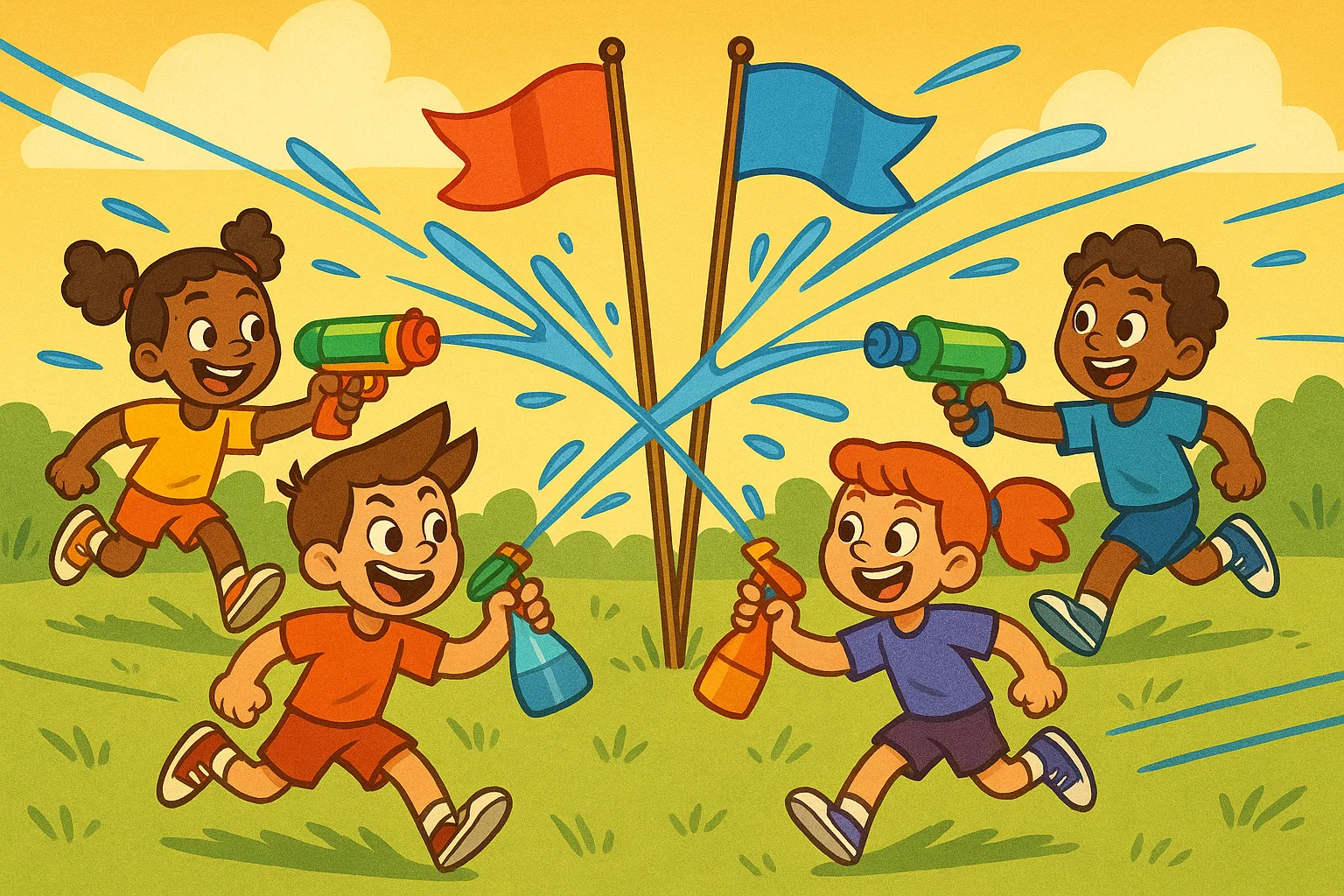
Water guns and spray bottles offer controlled play suitable for various age groups. The key is matching the equipment intensity to your children’s developmental stage.
Water Gun Capture the Flag Strategy
This tactical game combines strategy with active movement. Divide your yard into two territories and place a “flag” (any visible object) in each zone. Teams try to capture the opposing flag while defending their own.
Water element: Players can tag opponents with gun streams. Tagged players must freeze for 10 seconds before rejoining play. Set boundaries for appropriate spray targets (body only, no faces) to ensure safety.
Equipment needs: Medium-range water guns work best. Super-soakers may be too powerful for this activity.
Water Gun Soft Toy Squirt Competition
Mount stuffed animals or plastic toys on a fence or clothesline. Players stand at a designated line and use guns to knock targets off their perches. Scoring system:
- Small toys: 10 points
- Medium toys: 5 points
- Large toys: 3 points First player to reach 30 points wins. This game works particularly well for kids who enjoy both competition and target practice.
Spray Bottle Tag Sprint Game
For younger children or calmer play, spray bottles provide perfect alternatives to water guns. One player becomes “it” and chases others with a spray bottle, trying to spray their backs. Safety note: Establish clear rules that spraying faces is never allowed. When someone gets tagged, they become the new “it” player.
Water Gun Squirt Races Competition
Set up plastic cups along a fence or table edge. Each player uses their gun to fill their assigned cup. The stream of liquid tests both aim and consistency.
Race variations:
- First to overflow their cup wins
- Timed rounds to see who adds the most water
- Relay format where team members take turns This game teaches patience and precision while keeping everyone cool.
Sponge Water Games and Team Relays
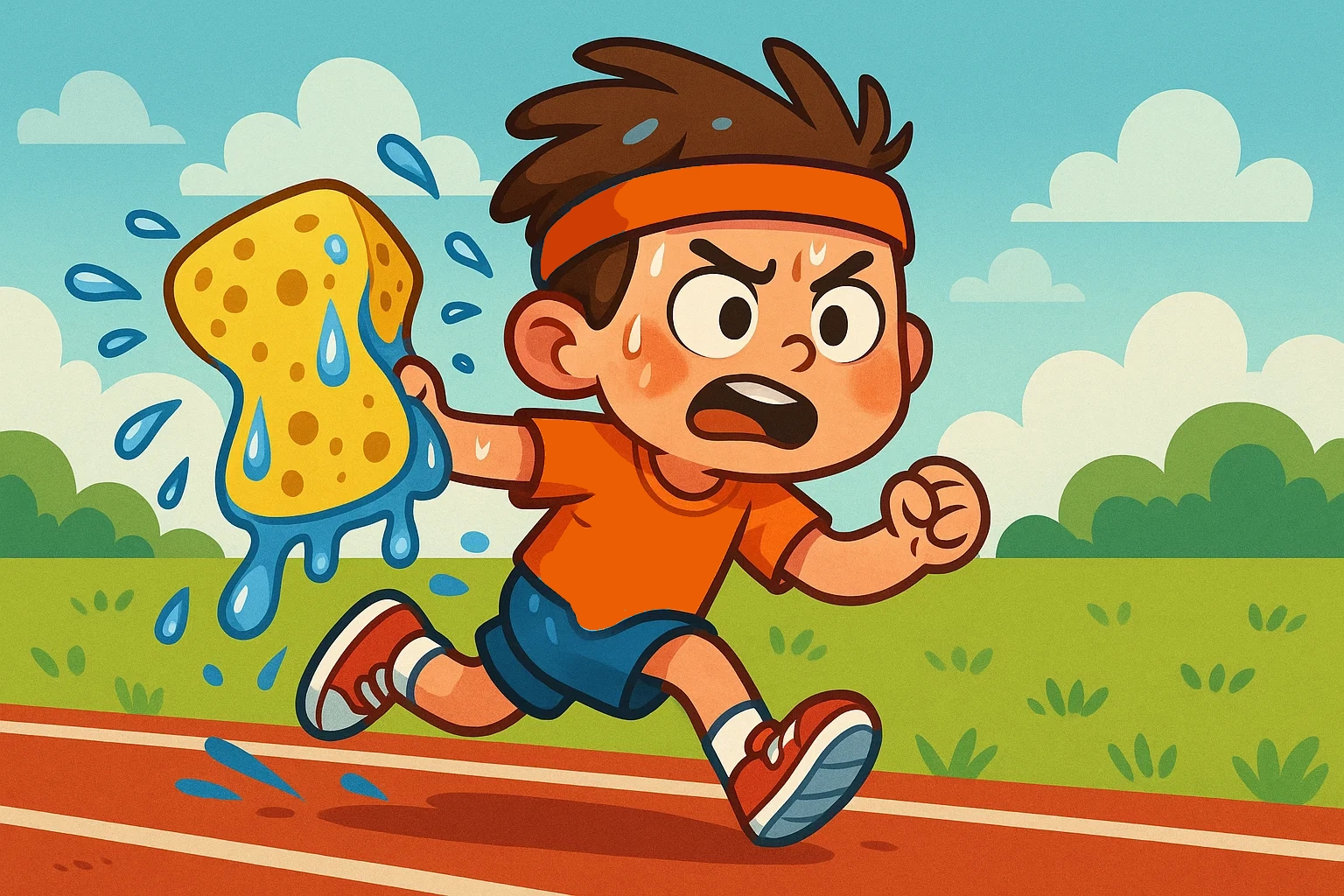
Sponges offer reusable, safe alternatives to balloons. A bunch of sponges costs less than disposable options and provides endless entertainment.
Sponge Toss: Bulls-Eye Target
Paint or chalk concentric circles on your driveway to create a target. Assign point values (10 for center, decreasing outward). Players soak sponges in a bucket with fluid and toss them at the target.
Skill development: This activity enhances throwing accuracy and mathematical thinking as children calculate scores.
Sponge Ball War Soak Contest
Divide players into two teams separated by a line. Each side gets a large bucket filled with water and multiple sponges. Teams soak sponges and throw them at opponents.
Boundary rules: Players cannot cross the center line. When hit, players aren’t out—they simply experience the refreshing splash. Set a time limit (5-10 minutes) rather than elimination rules to keep everyone playing.
Sponge Relay Race Challenge
This classic relay combines speed with water transfer skills. Set up two buckets for each team: one filled with liquid at the starting line, one empty at a distance of 15-20 feet.
How it works: Players soak their sponge in the full bucket, run to the empty bucket, squeeze out as much liquid as possible, then run back to tag the next teammate. The team that fills their bucket to a marked line first wins.
Tip for young kids: Reduce the distance to 10 feet and use larger sponges for easier gripping.
Water Race with Sponges
In this individual competition, each child races to transfer liquid from one bucket to another using only a sponge. Set up stations with identical buckets and sponges.
On “go,” players begin transferring water. After two minutes, measure which player moved the most fluid. This game naturally adapts to different ages since children compete against the clock rather than directly against each other.
Sprinkler Water Play: Creative Backyard Ideas
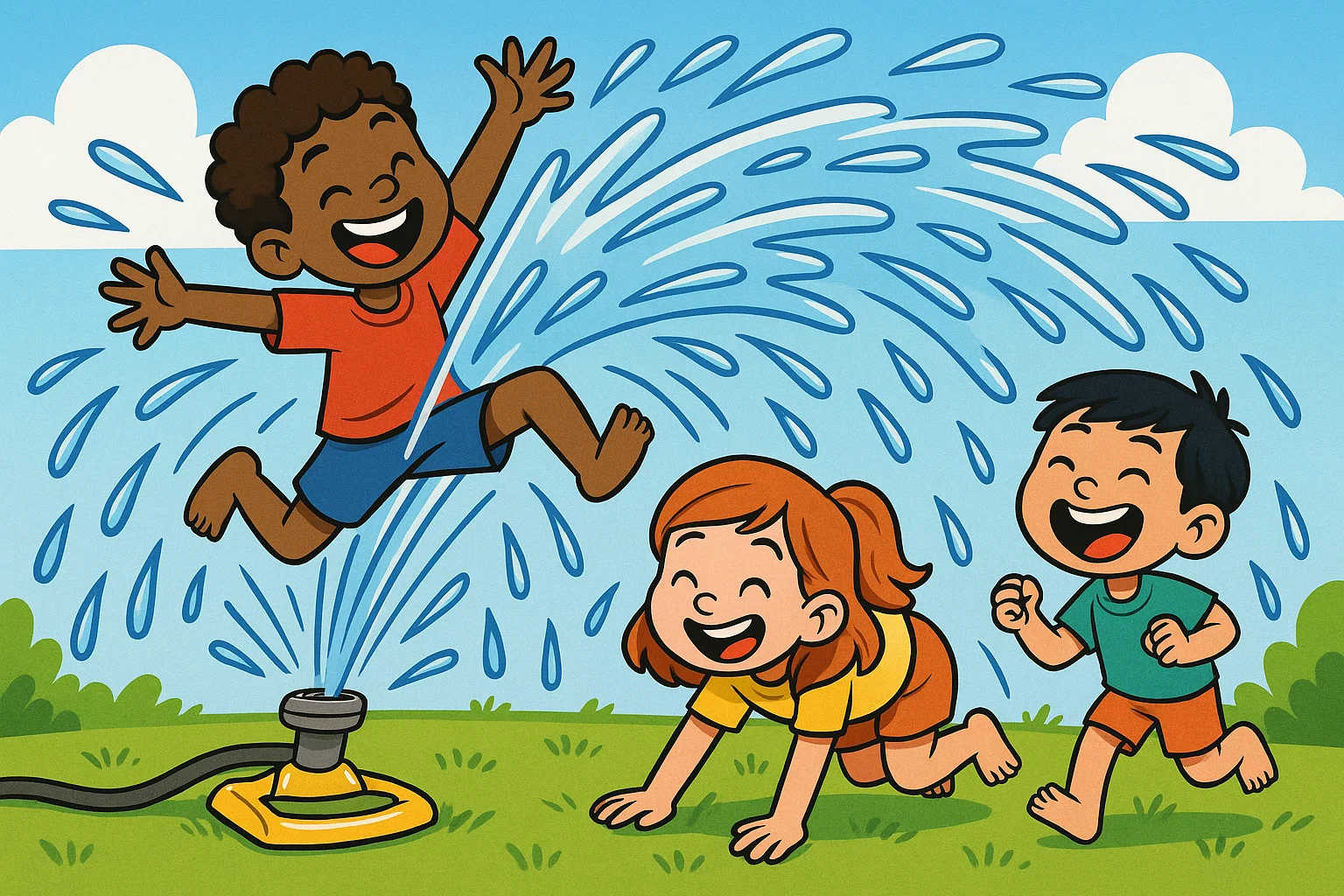
A simple sprinkler transforms into multiple game opportunities with minimal setup. According to the Environmental Protection Agency, outdoor play involving liquid helps children appreciate liquid conservation when accompanied by age-appropriate discussions.
Creative Sprinkler Games Kids Love
Sprinklers provide continuous cooling while supporting various play styles:
- Musical sprinkler: Players run through the sprinkler while music plays. When music stops, everyone must freeze outside the spray. Last person to stop takes a turn controlling the music.
- Sprinkler leap frog: Position players in a line leading through the sprinkler path. They perform leapfrog jumps, getting wet as they progress through the water zone.
- Pattern sprinkler jumps: Call out numbers, and children must jump through the sprinkler that many times before running out the other side.
Sprinkler Red Light, Green Light
Combine the classic game with liquid elements. Position the sprinkler between the starting line and finish line. The caller stands at the far end, back turned, saying “green light” to allow movement and “red light” to make players freeze.
Water challenge: Players must move through the sprinkler zone while following commands. Getting wet adds difficulty to maintaining balance during sudden stops.
Sprinkler Sharks and Minnows Game
One player starts as the “shark” in the sprinkler zone. Other “minnows” line up on one side and must run through the sprinkler to the opposite side without being tagged.
Tagged minnows become sharks, increasing the challenge with each round. The last remaining minnow wins and becomes the first shark in the next game. This game works exceptionally well for groups of 6 or more children.
Simple Water Sprinkler Fun Activities
Sometimes unstructured play provides the most value. Set up the sprinkler and let kids explore:
- Jumping through at different heights
- Doing cartwheels or somersaults through the spray
- Creating liquid rainbows on sunny days
- Playing follow-the-leader through the sprinkler path
Water Slide and Slip ‘n Slide Thrills
Water slides provide exhilarating fun for hot days. Whether purchased or homemade, these activities require careful setup and supervision.
DIY Slip ‘n Slide Construction
Creating your own slip and slide costs less than commercial versions and can be customized to your yard. Materials needed:
- Heavy-duty plastic sheeting (6 mil thickness minimum)
- Garden hose with spray nozzles
- Pool noodles for side bumpers
- Stakes or landscape staples
Construction steps:
- Select a flat, debris-free area at least 25 feet long
- Lay out plastic sheeting and secure edges with stakes
- Position pool noodles along both sides as soft bumpers
- Place sprinklers or hoses to create consistent water coverage
- Test the surface for smoothness before children use it Safety considerations: Always supervise use and establish rules about sliding feet-first only. The American Academy of Pediatrics recommends slip and slides for children ages 5 and older due to injury risks for younger children.
Building a Water Slide for Backyard Fun
If you have a gentle slope in your yard, enhance a commercial water slide with these additions:
- Create a splash zone at the bottom using a kiddie pool
- Add soap-free, child-safe lubricant to increase speed safely
- Position soft landing mats around the slide perimeter
- Set up shade structures nearby for rest breaks Maintenance tip: Inspect the slide surface before each use for tears or sharp objects that could cause injury.
Slide Along: Slip ‘n Slide Race
Mark multiple lanes on your slip and slide using different colored pool noodles. Two to four players race simultaneously, sliding down their designated lanes. Race variations:
- Traditional fastest slider wins
- Furthest distance traveled
- Best style points (judged somersaults, spins, etc.) For team versions, players tag the next teammate after completing their slide, creating relay excitement.
Curvy Wet Balance Beam
Place a wet pool noodle on the ground to create a curvy path. Children must walk along the noodle without stepping off while sprinklers spray the area around them. Progression levels:
- Beginners: Walk slowly with arms out
- Intermediate: Walk faster or backward
- Advanced: Walk while balancing a filled cup
This activity develops balance, concentration, and gross motor skills while incorporating cooling elements.
Water Game Obstacle Course Challenges
Obstacle courses incorporating water elements create memorable outdoor experiences. Research posted on Wiley Online Library indicates that varied physical challenges improve children’s overall motor skill development.
Obstacle Course Setup in the Backyard
Design your course with stations that alternate between dry and wet challenges:
| Station | Activity | Equipment Needed |
| 1 | Crawl under sprinkler | Sprinkler, cones |
| 2 | Sponge toss into bucket | Bucket, sponges |
| 3 | Jump through hula hoops | 3-4 hoops on ground |
| 4 | Fill cup from water source | Cups, water table |
| 5 | Slide on slip ‘n slide | Plastic sheeting, hose |
| 6 | Spray targets with water gun | Targets, water gun |
Time each participant’s complete run. Children can compete against their own previous times or challenge others in the group.
Water Relay Races Team Challenge
Divide children into equal teams for competitive relays. Each team completes stations before tagging the next runner. Sample relay stations:
- Fill a cup from a bucket and carry it 10 feet without spilling
- Soak a sponge and transfer liquid to another bucket
- Spray a target three times with a spray bottle
- Run through the sprinkler twice
- Pour collected water into the team’s main bucket The line wins when all team members complete the course and their main bucket reaches a marked fill line.
Dixie Cup Relay: A Teamwork Challenge
This cooperative game emphasizes teamwork over individual speed. Teams line up single-file. The first person in line gets a cup full of fluid. They pour it over their shoulder into the cup of the person behind them, who continues passing it backward.
Winning condition: The last person in line runs to fill their bucket. First team to fill their bucket to the designated line wins. This game works particularly well for mixed-age groups since it requires coordination rather than physical prowess.
PVC Cooperative Fill-up Game
Create U-shaped channels using PVC pipes or pool noodles cut lengthwise. Teams must hold these channels at the correct angles to transport liquid from a source to a bucket several feet away.
Setup: Position 4-6 players in a chain, each holding a channel section. They must work together to keep water flowing through the connected channels without spillage.
Skill development: This activity teaches cooperation, problem-solving, and fluid dynamics principles in an engaging, hands-on way. Children ages 8 and up typically grasp the physics concepts while younger participants enjoy the teamwork aspect.
Creative and Messy Fun Water Play Ideas
Sometimes the most memorable summer water games involve sensory exploration and creative expression. These activities engage children differently than competitive games.
Painting with Ice Pops: An Art Activity
Freeze liquid mixed with food coloring in popsicle molds. Children use these colorful ice pops as paint brushes on large paper or fabric sheets.
Process description: As the ice melts, it creates watercolor-like effects. The temperature contrast provides sensory stimulation while the artistic element encourages creativity.
Variation: Add glitter or small flower petals to the water before freezing for textured effects.
Excavate with Ice: A Sensory Game
Freeze small toys in large containers of water. Give children spray bottles filled with warm liquid and tools like spoons or small hammers.
How to play: Kids work to free the toys from ice using their spray bottles and tools. This activity combines problem-solving with sensory experiences as they observe ice melting at different rates based on water temperature and application method.
Learning connections: Discuss with children what makes ice melt faster, introducing basic science concepts in an experiential way.
Make an Ice Mold Treasure Hunt
Create elaborate ice sculptures by freezing fluid in various containers (bowls, balloons, molds). Hide small waterproof treasures inside before freezing.
Place these ice formations around the yard. Children search for ice pieces, then work to extract their treasures using only the sun, their hands, and a spray bottle.
Educational value: This game teaches patience and observation skills as children learn they cannot rush the melting process.
Water Spelling Activity for Learning
For school-age children, combine literacy with water play. Call out spelling words and have children use water guns or spray bottles to “write” letters on the driveway or fence. Adaptation for different ages:
- Younger children: Write simple letters or numbers
- Elementary students: Spell vocabulary words
- Older children: Write complete sentences This activity disguises learning as play, particularly helpful for children who resist traditional educational activities during summer break.
Toy Wash Cleanup Activity
Turn cleanup into entertainment by creating a toy washing station. Fill buckets with soapy liquid and provide scrub brushes, sponges, and towels. Children can wash:
- Outdoor toys like trucks and action figures
- Bath toys that need cleaning
- Plastic play dishes
- Bikes or scooters Parent benefit: Toys get cleaned while children engage in imaginative play. Many children ages 3-7 find washing activities particularly satisfying as they mimic adult tasks.
Classic Water Games with New Twists
Traditional games gain new appeal when water elements are added. These familiar activities become refreshing summer favorites.
Play Water Limbo Challenge
Set up a limbo bar (a pool noodle works perfectly) and position a sprinkler or hose above it to create a water curtain. Players lean backward to pass under both the bar and the stream of liquid without touching either.
Progression: Lower the bar after each round. Players who touch the bar or stand up take turns operating the hose for others.
Safety note: Ensure the surface beneath the limbo area isn’t slippery. Grass works better than wet pavement for this activity.
Add Water to Your Favorite Games to Mix Things Up
Many classic games transform when you add water elements:
- Water freeze dance: Play music while children dance through sprinkler spray. When music stops, everyone freezes. Anyone still moving when checked takes a turn being the music controller.
- Wet sack races: Traditional sack races become more challenging when sacks are soaked with liquid, increasing weight and difficulty.
- Water balloon volleyball: Replace the volleyball with a filled balloon. Teams must work together to catch and toss without breaking it. These modifications require minimal preparation while significantly increasing the fun factor on hot days.
Bobbing for Apples Party Game
This traditional autumn game works beautifully as a summer water activity. Fill a large bucket or kiddie pool with liquid and float apples on the surface.
How to play: Participants keep hands behind their backs and use only their mouths to catch an apple. The first person to successfully catch one wins.
Summer variation: Use the garden hose to keep fluid fresh and cool between attempts. For younger children who may find this frustrating, allow them to use their hands to create a more accessible version.
Duck, Duck, Splash Variation
Transform the classic “Duck, Duck, Goose” into a water game. Players sit in a circle while one child walks around with a cup of water, lightly tapping heads saying “duck.”
When they say “splash,” they pour the liquid on that person’s head, then runs around the circle trying to reach the empty spot before the splashed player tags them.
Group size: This works best with 8-12 children ages 4 and up. It’s a fun way to cool off while maintaining the social elements of the original game.
Kiddie Pool and Inflatable Pool Water Play
Even small pools provide extensive water play opportunities. According to the Consumer Product Safety Commission, proper supervision remains essential for any pool activity, regardless of water depth.
Cool Off: Inflatable Pool Setup
Select an inflatable pool appropriate for your available space and children’s ages. Small pools (2-3 feet deep) work for toddlers while larger models accommodate elementary-age children. Setup considerations:
- Choose level ground away from sharp objects
- Fill the pool with fresh water each use
- Test water temperature—it should feel cool but not cold
- Provide shade options for extended play sessions
- Keep a dedicated adult supervisor whenever the pool contains liquid Maintenance: Empty, clean, and dry pools after each use to prevent algae growth and maintain water quality.
Kiddie Pool Goalies: Soccer Style
Turn a kiddie pool into a soccer goal. One player stands in the pool as goalkeeper while others take turns trying to score by kicking a soft foam ball into the pool. Scoring system:
- Ball lands in pool: 1 point for kicker
- Goalkeeper blocks: 1 point for goalkeeper
- First to 10 points wins and switches roles Age adaptations: For younger children, position them closer to the pool and use a larger, lighter ball for easier kicking.
Try Toe Diving in the Paddling Pool
This silly game challenges players to retrieve objects using only their toes. Toss various items into a paddling pool:
- Plastic coins
- Rubber toys
- Smooth stones
- Foam shapes Players sit at the pool edge and use their toes to fish out objects. Count how many items each person retrieves in one minute. This activity develops fine motor skills in feet and ankles while providing giggles and entertainment.
Aim the Frisbee Float Game
Float a hula hoop in an inflatable pool. Players stand at a designated distance and toss Frisbees, trying to land them through the floating hoop. Variations:
- Move the throwing line farther back for increased difficulty
- Use multiple hoops of different sizes with varying point values
- Play in teams where members alternate throws
- Add a time limit for faster-paced games This game combines hand-eye coordination with the cooling benefits of being near water.
Field Day Water Games and Outdoor Fun
School field days and community events benefit enormously from water activities. These games entertain large groups while keeping everyone cool during outdoor celebrations.
Tips for Adding Water Games to Field Day
When planning water activities for organized events, consider these logistical factors: Preparation checklist:
- Verify access to a water supply and hose connections
- Prepare a designated change area for wet clothing
- Communicate with families beforehand so children bring appropriate attire
- Schedule water activities during the hottest part of the day
- Arrange for sun protection through shade structures
- Designate specific volunteers for water game supervision
- Have towels available for children who become unexpectedly uncomfortable Age grouping: Separate activities by grade level to ensure appropriate challenges. Primary students enjoy simpler games while upper elementary children prefer competitive elements.
Water Game Ideas for Field Day Events
These games work particularly well for large groups:
- Water brigade: Teams form lines from a full bucket to an empty bucket 20 feet away. Using only cups, they transfer liquid person-to-person down the line. First team to fill their end bucket wins.
- Sponge toss stations: Set up multiple throwing lanes where children toss wet sponges at targets. Rotate groups through each station every 3-4 minutes.
- Sprinkler obstacle course: Create a path through multiple sprinklers with cones marking the route. Time each participant’s run through the course.
- Water balloon stations: Designate specific areas for water balloon activities with clear boundaries. Include both individual and partner challenges.
Cooperative Version Team Fun
Not all field day activities need winners and losers. Cooperative water games emphasize teamwork and participation:
- Group bucket fill: The entire group works together to fill a large container using small cups. Celebrate when the goal is reached rather than racing against others.
- Water passing circle: Students stand in a large circle passing cups of water around. The goal is to complete five full circles without dropping any cup. If someone drops one, the group starts over.
- Whole-group sprinkler dance: Everyone moves through sprinkler patterns together while music plays, following a leader who demonstrates different movements. These activities ensure all children feel included regardless of athletic ability.
Minute-to-Win-It Water Games
Fast-paced challenges keep attention and energy high. Set up multiple stations where children have 60 seconds to complete tasks:
| Challenge | Task | Materials |
| Drip Drop | Transfer liquid using an eyedropper to fill a small bottle | Eyedroppers, bottles |
| Sponge Race | Transfer maximum water with a sponge in one minute | Sponges, buckets |
| Spray Stack | Knock down a cup pyramid using only a spray bottle | Spray bottles, cups |
| Ice Fishing | Use toes to move ice cubes from bucket to another | Ice, two buckets |
| Cup Cascade | Stack wet cups into a pyramid without toppling | Plastic cups, water |
Rotate groups through stations every few minutes. Award participation certificates rather than focusing solely on winners.
Water Car Wash Activities in the Backyard
Water car wash activities combine water play with imaginative scenarios. These games let kids experience grown-up tasks in playful ways.
Human Car Wash Fun Setup
Create a “car wash” pathway where children pretend to be vehicles moving through cleaning stations. Set up different zones:
- Station 1 – Pre-rinse: Children run through a sprinkler
- Station 2 – Soap brushes: Volunteers gently tap players with pool noodles
- Station 3 – Main wash: Players move through a second sprinkler zone
- Station 4 – Dry cycle: Children spin in circles (like dryers) Variation: Some kids act as cars while others operate the car wash stations, then switch roles. This dramatic play encourages creativity and cooperation.
Bathe or Shower Outdoors: Unique Fun
For families comfortable with outdoor bathing, setting up an outdoor shower provides practical cooling relief. Use a garden hose with a shower attachment or a camp shower bag hung from a tree.
Summer benefit: Children can cool off between activities without tracking liquid through the house. This works especially well for families with toddlers who need frequent breaks from heat.
Privacy considerations: Ensure adequate privacy through fencing or strategic placement. Children should wear swimsuits even for outdoor shower activities.
Bath toy integration: Bring outdoor-safe bath toys into the shower area to extend play opportunities while children clean off from other messy activities.
Essential Gear and Safety for Water Play
Proper preparation and safety awareness help keep water activities fun and injury-free. Child safety experts emphasize that adult supervision remains the most critical element of safe water play.
Equipment Preparation for Water Games
Stock your summer supply closet with these versatile items:
Basic water game supplies:
- Multiple buckets of various sizes (2-5 gallon capacity)
- Several dozen sponges (buy in bulk for economy)
- 100 water balloons plus a filling nozzle attachment
- At least two spray bottles
- One or two age-appropriate water guns
- Garden hose with multiple spray settings
- Sprinkler (oscillating or stationary)
- Plastic cups in multiple sizes
Enhanced equipment:
- Kiddie pool or small inflatable pool
- Slip ‘n slide or plastic sheeting
- Pool noodles for multiple uses
- Bath toys that work outdoors
- Mesh bags for storing wet items
- Towels designated for outdoor use
Organization tip: Store items in a large waterproof container that can stay outside. This simplifies setup and encourages spontaneous water fun.
Tips for Water Game Safety and Supervision
The American Red Cross provides specific guidelines for water activity supervision: Supervision standards:
- Maintain constant visual contact with all children near water
- Designate one adult as “water watcher” who doesn’t engage in other activities
- Establish clear boundaries for play areas
- Never leave standing liquid unattended
- Empty kiddie pools and buckets immediately after use
Safety rules to establish:
- No running near wet surfaces
- Take turns with equipment to prevent conflicts
- No spraying faces with water guns or spray bottles
- Stop play immediately when someone gets hurt or uncomfortable
- Establish a “dry zone” where children can rest without getting wet
Temperature monitoring: Watch for signs of getting too cold, even on hot days. Children’s lips turning blue or excessive shivering indicate they need a warm towel and break from water fun.
Swimwear and Sunscreen Protection
Proper clothing and sun protection ensure children can play comfortably for extended periods. Appropriate water play attire:
- Swimsuits or quick-dry athletic clothing
- Water shoes or old sneakers for slip prevention
- Rash guards for extended outdoor play
- Hat with chin strap that won’t blow off during active games
Sun protection essentials: The Skin Cancer Foundation recommends:
- Apply broad-spectrum SPF 30+ sunscreen 15-30 minutes before outdoor play
- Reapply every 2 hours or after getting heavily wet
- Use water-resistant formulations for activities
- Don’t forget often-missed areas: ears, feet, back of neck
Hydration reminders: Water play doesn’t eliminate the risk of dehydration. Encourage children to drink every 20-30 minutes during active outdoor play, even when they’re getting wet. Set up a water station separate from play areas where children can take drink breaks.
Heat safety: Schedule the most intense water games during cooler parts of the day when possible. If playing during peak heat hours (11 AM – 3 PM), provide frequent shade breaks and watch for signs of heat exhaustion: excessive sweating, pale skin, weakness, or nausea.
